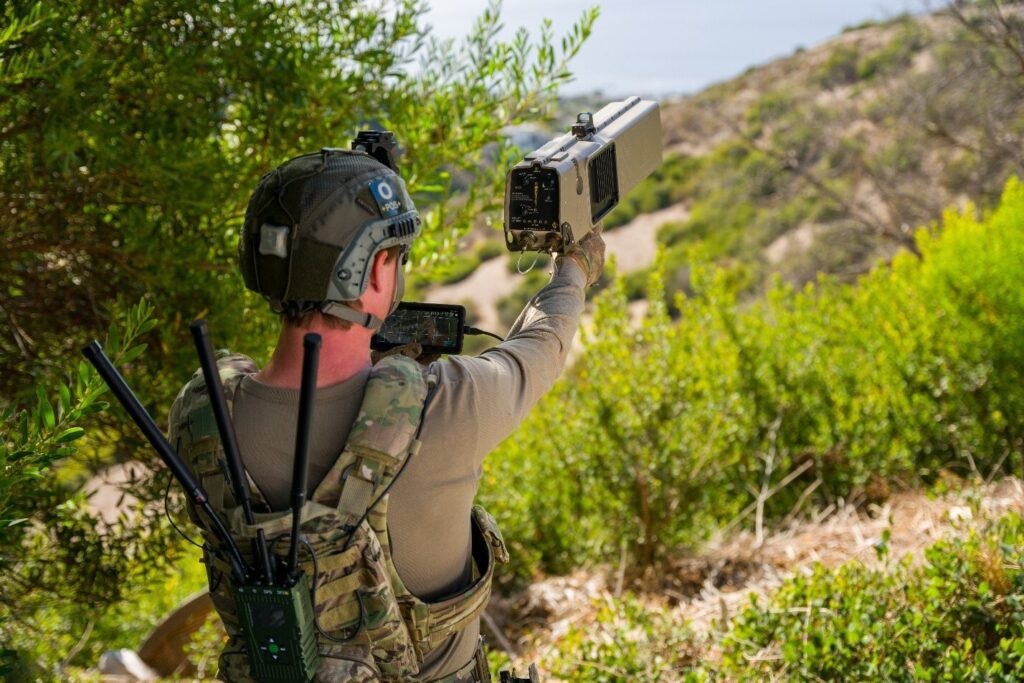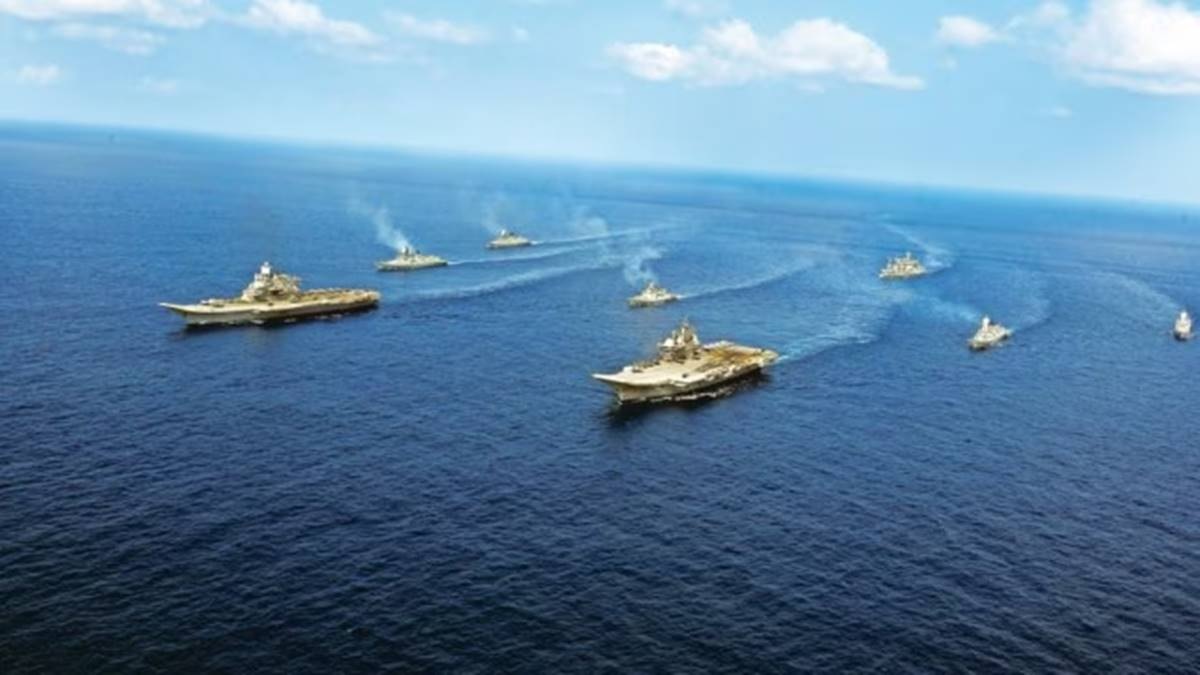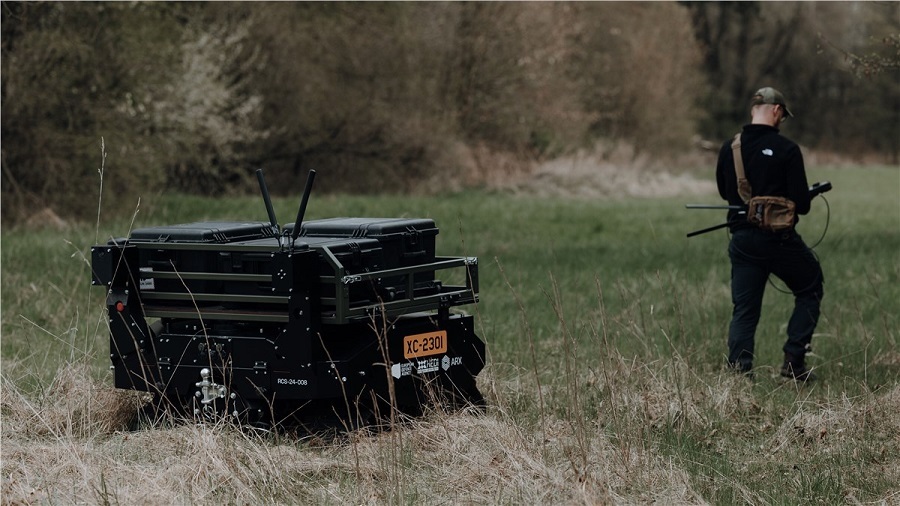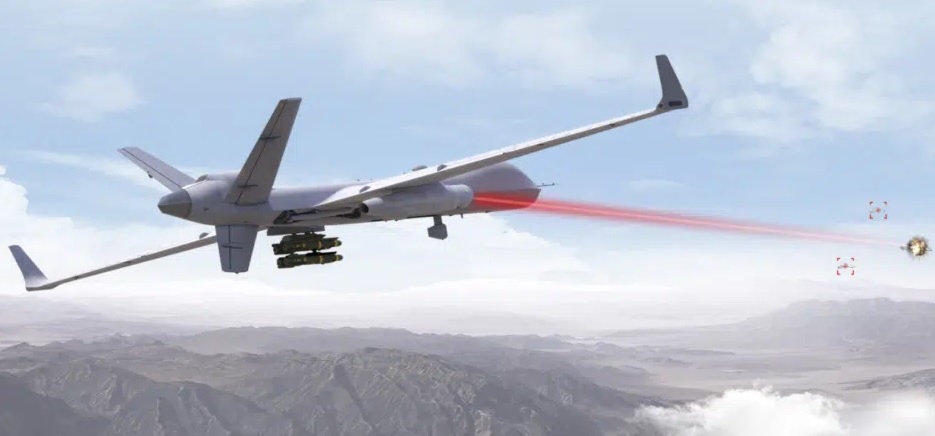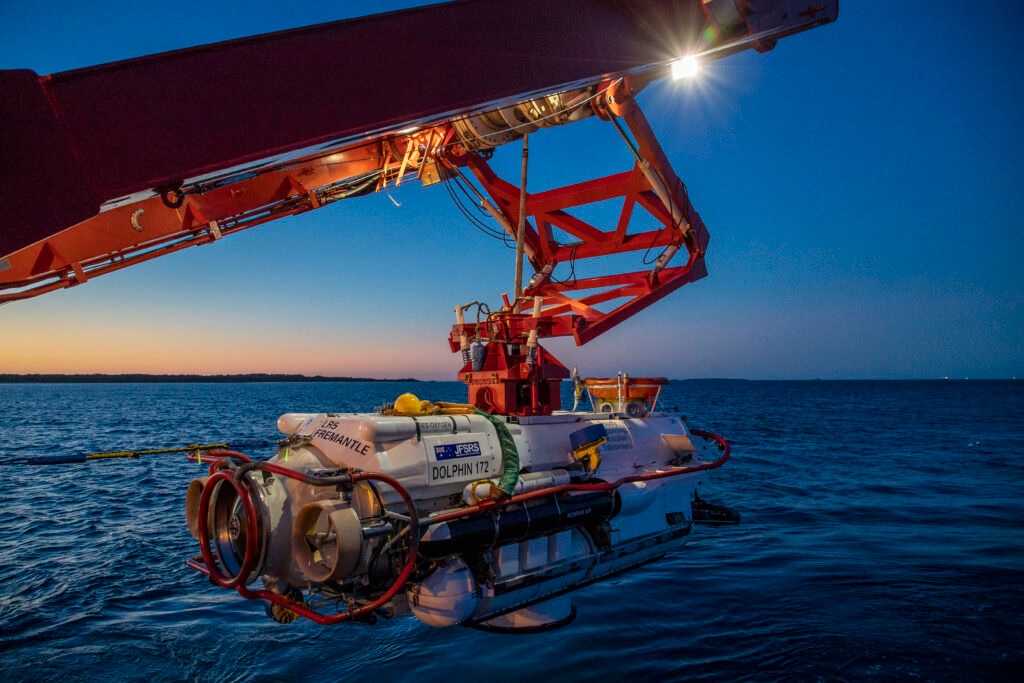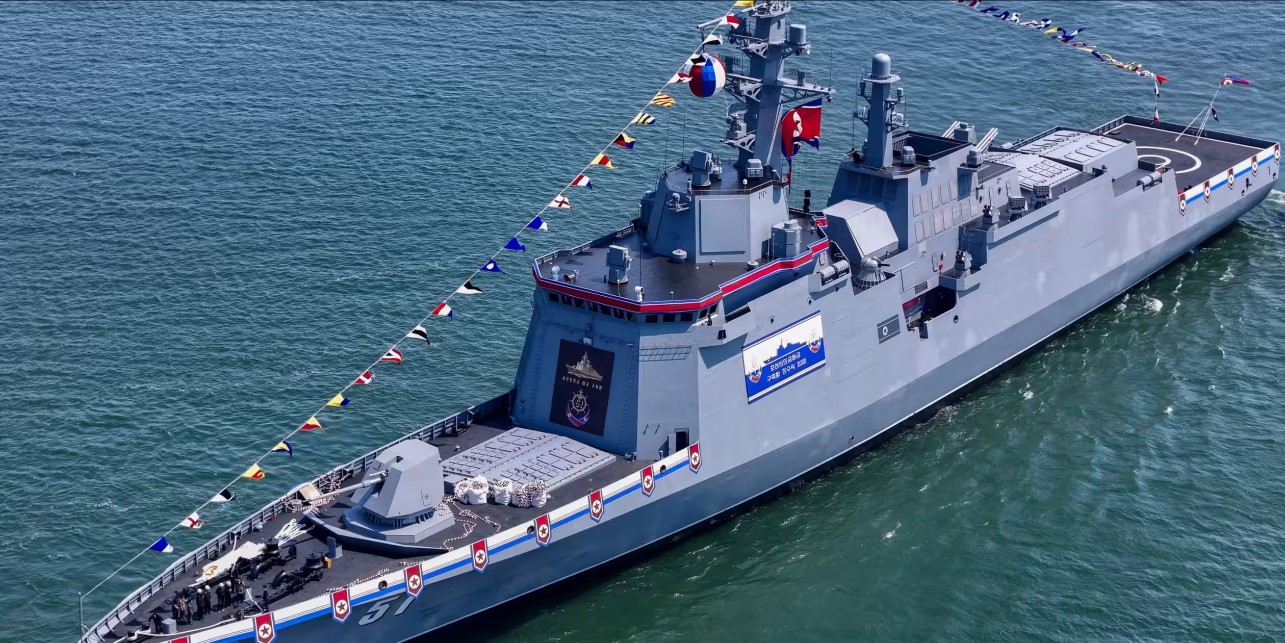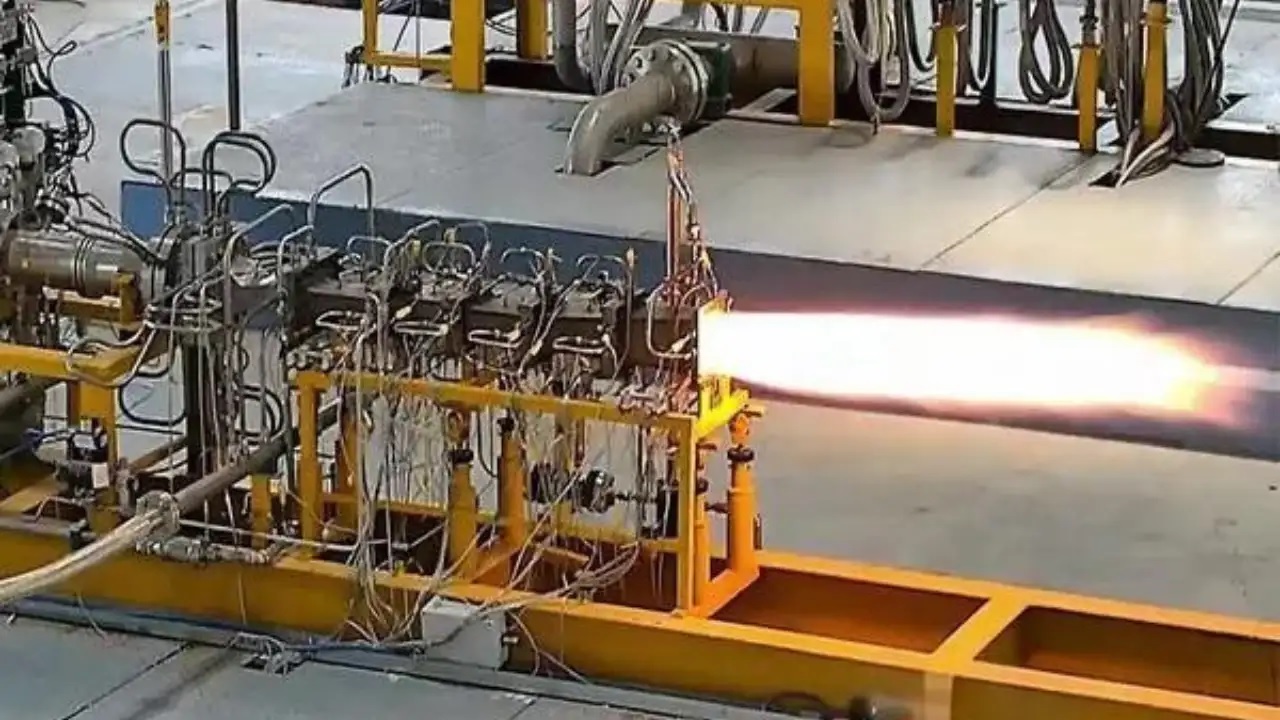India
An intense wave of panic has spread across Pakistan after India made a bold move to suspend the Indus Waters Treaty (IWT), an agreement that has peacefully governed the sharing of river waters between the two nations for more than 60 years. This unprecedented decision came shortly after a deadly militant attack in Pahalgam, Kashmir, where 26 people—mostly Indian tourists—lost their lives. India has blamed Pakistan-based militants for the attack, although Pakistan has strongly denied any involvement. In response to the tragedy, India’s government took a series of tough steps. The biggest shock was the announcement to suspend the IWT, a treaty brokered by the World Bank in 1960, which ensures water-sharing rights between the two nuclear-armed neighbors. Along with suspending the treaty, India also stopped issuing visas to Pakistani citizens, reduced its diplomatic staff in Islamabad, and closed the only land border crossing between the two countries. Pakistan hit back by closing its airspace to Indian flights and halting all trade with India. The Indus River and its tributaries are the lifeline of Pakistan, watering around 80% of the country’s farmland. Millions of farmers depend on this water for their crops and livelihoods. With the river already running low and rainfall becoming more unpredictable due to climate change, the sudden suspension of the treaty has left farmers, experts, and officials deeply worried about the future. Farmers in Sindh and Punjab fear that without the regular flow of water, their lands could dry up, devastating Pakistan’s agriculture and food supply. India’s top security body, the Cabinet Committee on Security led by the Prime Minister, defended the decision by stating that it would remain in place until Pakistan "credibly and irrevocably" ends its alleged support for terrorism. While it is not technically possible for India to instantly cut off the water supply due to existing structures and treaty obligations, Indian officials suggest that within a few months, India could start diverting more water for its own use. They are also planning to speed up new dam and hydroelectric projects. Another immediate impact is India's decision to stop sharing vital water data, including flood warnings, which could leave Pakistan dangerously unprepared for natural disasters. The suspension of the Indus Waters Treaty marks one of the most serious escalations between the two countries in recent years. The treaty had famously survived wars and major conflicts between India and Pakistan, and its suspension now adds a heavy layer of uncertainty to an already tense relationship. Pakistani leaders and experts have warned that if India blocks or diverts water, it could be seen as an “act of war,” making the situation even more dangerous. Beyond the current crisis, bigger issues loom. Both India and Pakistan are struggling with rising populations, greater demand for water and electricity, and the growing impacts of climate change. India has long argued for a revision of the treaty, saying circumstances have changed since 1960. On the other hand, Pakistan sees water access as a question of survival. With emotions running high on both sides and millions depending on the Indus River, the future of the treaty—and peace in the region—now hangs by a fragile thread.
Read More → Posted on 2025-04-27 15:41:17World
DZYNE Technologies, a well-known name in autonomous defence systems, has officially launched the Dronebuster® 4-EU, an advanced handheld counter-drone device specially designed for the European market. This new model is an upgraded version of their widely used Dronebuster series, tailored to meet Europe’s specific frequency regulations and growing need for reliable anti-drone solutions. What is the Dronebuster 4-EU? The Dronebuster® 4-EU is a portable, easy-to-use electronic warfare tool that can detect, track, and neutralise unauthorised drones. It works by jamming the radio frequencies drones use for communication and control. In addition to this, it comes with an optional Position, Navigation, and Timing (PNT) attack mode, capable of disrupting drones operating via major satellite navigation systems like GPS, Galileo, GLONASS, and BeiDou. This device is designed for both civilian and military applications—protecting airports, public events, stadiums, borders, government buildings, maritime zones, and other sensitive locations from rogue or hostile drone activities. Key Features and Specifications European Frequency Compatibility: Optimised to work within Europe’s Short Range Device (SRD) bands. Detection Range: Can detect drones up to 7 kilometres away. Jamming/Neutralisation Range: Effective jamming range of 1.5 kilometres or more, depending on environmental conditions. Multiple Deployment Options: Can be used as a handheld unit, mounted at fixed sites, or integrated into mobile and wearable systems. PNT Attack Mode: Optional feature that can disrupt drones using satellite navigation, interfering with systems like GPS, Galileo, GLONASS, and BeiDou. DTIM (Detect, Track, Identify, Mitigate): Provides a wearable, multi-layered counter-drone defence system. Integrated Visualisation Tools: Allows operators to see drone positions and status in real time. Portable and Lightweight Design: Built for ease of use by security teams, law enforcement, and military personnel. Operational Flexibility: Can function as a standalone device or as part of a networked, layered defence system. Why Was It Developed? DZYNE developed the Dronebuster® 4-EU in response to the rising threat of drone misuse across Europe. As drone technology becomes more accessible, the risks to public safety, infrastructure, and national security have grown. This new model ensures that European security teams have a compliant, high-performance counter-drone tool that can handle both civilian and military-grade drones. Global Impact and Production Expansion DZYNE’s Dronebuster series has already made a name for itself worldwide, with over 2,200 units sold, including more than 1,000 with the U.S. Armed Forces. The U.S. Department of Defense has even recognised it as a Program of Record, confirming its reliability and operational value. The demand for the new Dronebuster 4-EU has led DZYNE to expand its production and workforce at its Oregon-based facility to meet growing orders from Europe and beyond. A recent multi-million-dollar contract from an allied nation further highlights the system’s international appeal. Final Thoughts The Dronebuster® 4-EU represents the next step in portable, adaptable counter-drone systems, offering European customers a versatile, powerful, and regulation-friendly tool for safeguarding sensitive areas against drone threats. With enhanced features like PNT attack modes, long-range detection, and multi-platform deployment, it’s set to become a vital asset in the fight against unauthorised drone activities across the region.
Read More → Posted on 2025-04-27 15:34:56India
Amid the ongoing tensions with Pakistan, the Indian government is stepping up efforts on multiple fronts to safeguard national interests. One major move involves a new plan by the Centre to maximise the use of Indus river waters. This decision comes as the long-standing Indus Waters Treaty faces uncertainty, with India considering steps to suspend parts of it. The government aims to study ways to better utilise the water resources allocated to India under the treaty, which has remained unchanged for decades. Officials believe that by optimising water use from rivers like the Ravi, Beas, and Sutlej, India can meet its growing agricultural and energy needs more effectively. At the same time, India’s military preparedness has been on full display. In a strong message of readiness, Indian naval warships recently conducted successful anti-ship firing drills. These exercises were meant to revalidate the Navy’s ability to carry out long-range precision strikes against potential threats. An Indian Navy official emphasised that the fleet remains combat-ready, credible, and fully prepared to safeguard the country’s maritime interests under any circumstances. Adding to this show of strength, the Navy’s indigenous guided missile destroyer, INS Surat, achieved a significant milestone by intercepting a fast, low-flying missile target skimming across the sea. This successful interception highlights India’s growing capabilities in modern naval warfare and comes at a time when security tensions are high following the terrorist attack in Pahalgam, Jammu and Kashmir, which resulted in 26 casualties. Pakistan, meanwhile, has issued a maritime advisory about its planned surface-to-surface missile tests from its Karachi coastline within its Exclusive Economic Zone between April 24 and 25. Indian defence sources confirmed they are closely monitoring these developments to ensure national security remains uncompromised. On the internal security front, Indian authorities have intensified their crackdown on terrorism. In Jammu and Kashmir, the homes of three active terrorists were demolished in the districts of Bandipora, Pulwama, and Shopian. This decisive action is part of a broader effort to dismantle the terror infrastructure operating in the region following the Pahalgam attack. Together, these developments reflect India’s proactive stance — whether it’s managing critical water resources, demonstrating military strength, or ensuring internal security — at a time when regional tensions are running high.
Read More → Posted on 2025-04-27 15:28:10World
On 28 April, Norway will reach an important milestone in its defence journey as it officially takes delivery of the first Joint Strike Missiles (JSM) for its advanced F-35A fighter aircraft. This event, marked by a ceremony at Ørland Air Base, represents not just the completion of Norway’s F-35 deliveries but also the beginning of a new chapter in the country’s military capabilities. A Game-Changer for Norway’s Air Power The arrival of the JSM brings a significant enhancement to Norway’s national defence. The missile is specifically designed to give fighter aircraft the ability to strike heavily defended targets at long distances, with exceptional precision and minimal risk of being detected by enemy radar systems. Brigadier Jarle Nergård, head of Air Systems at the Norwegian Defence Materiel Agency (NDMA), called it a capability that was once available only to major military powers. Developed by Norway’s Kongsberg Defence & Aerospace (KDA) in partnership with the NDMA and the Norwegian Defence Research Establishment (FFI), the JSM is a world-class missile built on cutting-edge technology. It is the only missile in its category designed to be carried internally by the F-35, preserving the aircraft’s stealth profile and long-range performance. What Makes the Joint Strike Missile Special? The JSM stands out for its advanced design and smart systems. It’s a fifth-generation, precision strike missile created for both land and maritime attack missions. With its internal carriage capability inside the F-35’s weapons bay, it ensures the fighter remains undetectable to enemy radars until the moment of attack. Key Specifications of the Joint Strike Missile (JSM): Type: Fifth-generation, long-range precision strike missile Length: 4 meters Weight: Approximately 416 kg Range: Over 275 nautical miles (about 500 km) Speed: Subsonic Warhead: 120 kg high-explosive fragmentation Guidance: GPS, INS (Inertial Navigation System), Terrain Contour Matching (TERCOM), Imaging Infrared (IIR) seeker Communication: Two-way datalink for real-time mission updates and target re-selection Compatibility: Internally carried in F-35A and F-35C, externally on F-35B and other aircraft The JSM’s advanced sensors and two-way datalink allow it to navigate through complex enemy air defences and adjust its course in flight, even receiving new targeting information while airborne. This makes it highly reliable under challenging combat conditions. Strengthening Norway’s Deterrent Power Brigadier Nergård emphasized the strategic importance of the missile, stating it will offer Norway a powerful deterrent capability, particularly in vast maritime regions. "It will simply not be possible to sail freely where there are F-35s equipped with the JSM," he remarked. This deterrence extends to both land-based and naval targets, providing Norway with a flexible and modern offensive tool. The delivery of the final three F-35 aircraft earlier this month completed Norway’s largest-ever defence procurement. One of these aircraft will remain in the United States for critical software testing and integration work needed for the JSM to become fully operational with the fighter fleet. Global Recognition and Expanding Production The JSM has already attracted international attention. Countries like Australia, Japan, and the United States have committed to purchasing the missile, and more nations are expected to follow suit in the near future. To meet this growing demand, Kongsberg Defence & Aerospace, together with around 100 Norwegian subcontractors, has expanded its production capacity. A new missile factory in Kongsberg, operational since June 2024, is actively producing both the JSM and its naval variant, the Naval Strike Missile (NSM). Plans are also underway to establish additional manufacturing facilities in Australia and the United States by 2028, ensuring a steady global supply of this cutting-edge weapon system. A New Chapter in Norway’s Defence Story With the arrival of the JSM and the completion of its F-35A fleet, Norway has firmly positioned itself as one of the leaders in modern air combat capability among the 20 F-35 partner nations. Around 20% of the total F-35 program budget was reserved for acquiring state-of-the-art weapons like the JSM, ensuring Norway’s air force is equipped to face modern threats for years to come. This milestone not only enhances Norway’s national security but also showcases the country’s ability to develop world-leading defence technologies through close cooperation between its armed forces and defence industry.
Read More → Posted on 2025-04-27 15:15:35Space & Technology
India’s space programme has taken another significant step forward as the Second Stage (GS2) of the GSLV launch vehicle was officially flagged off on March 24, 2025. The ceremony took place at the ISRO Propulsion Complex (IPRC) in Mahendragiri, with Dr. V. Narayanan, Secretary of the Department of Space (DOS) and Chairman of ISRO, leading the event. Senior officials from the ISRO Propulsion Complex (IPRC) and Vikram Sarabhai Space Centre (VSSC) were also present during this important milestone. This GS2 stage is crucial for the upcoming GSLV-F16 mission, which is set to launch the NASA-ISRO Synthetic Aperture Radar (NISAR) satellite into space. The NISAR mission is a prestigious joint project between NASA and ISRO, aimed at providing detailed Earth observation data to monitor changes in ecosystems, ice mass, sea levels, and natural disasters. The Second Stage (GS2) is a liquid-fuel stage of the GSLV (Geosynchronous Satellite Launch Vehicle). It uses a powerful Vikas engine that runs on a combination of UH25 (a mix of unsymmetrical dimethylhydrazine and hydrazine hydrate) and nitrogen tetroxide as propellants. The GS2 stage is designed to ignite after the solid-fueled first stage (S139) burns out, providing the required thrust to carry the satellite further into its orbit. Specifications of GSLV Second Stage (GS2) Engine: Vikas engine Propellant Type: Liquid (UH25 and N2O4) Propellant Mass: Around 40 tonnes Thrust: Approximately 725 kN Burn Time: Around 150 seconds The GS2 stage was transported from Mahendragiri to the launch complex at Sriharikota, where preparations for the GSLV-F16/NISAR mission have already begun in the first week of April 2025. This marks the beginning of a crucial phase in the mission's launch campaign activities. The NISAR satellite is expected to be one of the most advanced Earth observation satellites ever built, capable of monitoring environmental changes with unmatched accuracy. It carries a dual-frequency radar system, operating in both L-band and S-band, to provide high-resolution data under all weather conditions, day and night. The successful flagging off and transportation of the GS2 stage underline ISRO’s steady progress toward another landmark launch. The GSLV-F16 mission will not only enhance India’s space capabilities but also strengthen international collaborations in the field of Earth observation and climate monitoring.
Read More → Posted on 2025-04-27 14:58:26World
The European Defence Agency (EDA) has taken an important step towards enhancing European military capabilities by conducting a series of system acceptance tests on autonomous systems ahead of its major Operational Experimentation (OPEX) campaign planned for June and July 2025 in Rome. These tests are crucial for ensuring that each system meets strict technical, operational, safety, and reliability standards before being deployed in real-world military scenarios. What is the OPEX Campaign? The Operational Experimentation (OPEX) campaign is a European initiative led by the EDA that allows unmanned aerial and ground systems to be tested in realistic battlefield conditions. Hosted by the Italian Army, this campaign gives defence developers and military planners a chance to observe how new unmanned technologies perform in demanding operational environments. The aim is to identify systems that can be quickly integrated into the European Union’s future military operations, especially in the areas of logistics support, reconnaissance, surveillance, and battlefield management. Six Companies in the Spotlight In recent weeks, EDA experts visited several European countries to assess the solutions proposed by six defence technology companies: Beyond Vision from Portugal ALTUS LSA from Greece Schiebel from Austria Alisys from Spain Siec Badawcza Lukasiewicz PIAP from Poland ARX Robotics from Germany Each company presented either unmanned ground vehicles (UGVs), unmanned aerial vehicles (UAVs), or integrated autonomous systems, all designed to perform crucial support roles in complex military operations. The systems underwent rigorous technical inspections, safety evaluations, and reliability tests to verify that they are capable of performing autonomously, securely, and efficiently in operational conditions. Focus on Innovation and Rapid Capability Development The OPEX campaign is not just about testing equipment — it’s also about accelerating innovation. The EDA’s Hub for European Defence Innovation (HEDI) is leading this effort by creating a collaborative space where industry experts, military users, and technical specialists can work together. HEDI is designed to rapidly turn emerging ideas into operational military tools. Through immersive, scenario-based experiments, it allows new technologies to be trialled, validated, and fine-tuned in simulated combat and support operations. This ensures that when these systems are eventually deployed, they’re fully prepared for the challenges of modern battlefields. NATO’s New Electromagnetic Warfare Sensor: GANDALF-4 Meanwhile, NATO has made significant progress in strengthening its electromagnetic warfare (EW) capabilities with the successful testing of a new prototype sensor called GANDALF-4. Developed by the NATO Communications and Information Agency (NCIA), this sensor is designed to detect, classify, and locate attempts to disrupt or deceive Global Navigation Satellite System (GNSS) signals — a tactic known as GNSS jamming and spoofing. As modern militaries depend heavily on GNSS signals for navigation, targeting, and communications, these types of attacks represent a serious risk to operational security and effectiveness. Advanced Testing in Controlled Conditions The GANDALF-4 sensor underwent a series of precise performance tests in a specialised anechoic chamber at the NATO Support and Procurement Agency’s (NSPA) facility. This high-tech chamber simulates an isolated electromagnetic environment, enabling accurate calibration and assessment of the sensor’s antenna array. The tests focused on the sensor’s ability to detect and locate jamming and spoofing sources, with a high degree of accuracy and reliability — essential for protecting NATO’s critical infrastructure and operational forces. A Strong NATO Partnership This testing campaign was made possible through close collaboration between NCIA’s Electromagnetic Warfare and Surveillance (EW&S) team and NSPA’s Ground-Based Defence (GBD) experts. The partnership ensured that technical expertise and operational knowledge were combined effectively to achieve testing goals. Both agencies confirmed that the success of these trials marks an important step towards rapidly deploying next-generation electromagnetic defence systems within NATO’s operational network. Both the EDA and NATO are actively investing in advanced autonomous systems and electromagnetic defence technologies to prepare for future operational challenges. The upcoming 2025 OPEX campaign and the deployment of systems like GANDALF-4 are clear examples of how European and NATO forces are modernising their capabilities to maintain operational superiority in increasingly complex and contested environments. By combining operational trials with innovation hubs and expert collaboration, these defence organisations are setting new standards for the integration of cutting-edge military technologies.
Read More → Posted on 2025-04-27 14:55:39World
NATO has achieved an important milestone in its ongoing efforts to strengthen its electromagnetic warfare defences. The alliance recently completed successful testing of its latest prototype sensor system, GANDALF-4, a cutting-edge technology designed to detect and counter threats in the invisible yet vital electromagnetic spectrum. This advanced sensor was developed by the NATO Communications and Information Agency (NCIA) in collaboration with the NATO Support and Procurement Agency (NSPA). The testing took place inside NSPA’s state-of-the-art anechoic chamber facility, a specially designed environment that completely absorbs electromagnetic waves, enabling highly precise testing without external interference. What Is GANDALF-4? The GANDALF-4 system — standing for GNSS and Navigation Detection, Analysis, and Locating Facility — is an advanced prototype sensor created to detect, classify, and pinpoint attempts to interfere with Global Navigation Satellite System (GNSS) signals. This includes both jamming (blocking signals) and spoofing (sending fake signals to mislead navigation systems), two growing tactics used in modern electronic warfare. These threats can seriously disrupt military operations, affecting everything from aircraft navigation and missile guidance to communications and troop movements. The introduction of GANDALF-4 is NATO’s proactive response to these rising challenges. Key Features and Specifications While detailed technical specifications remain classified, NATO has shared several important capabilities of the GANDALF-4 system: Antenna Array Configuration: Equipped with a sophisticated, multi-element antenna array capable of detecting and distinguishing between multiple signal sources and types of interference. Signal Detection Range: Designed to monitor a wide frequency band, covering the primary ranges used by GNSS constellations such as GPS, Galileo, GLONASS, and BeiDou. Threat Classification: The system can differentiate between accidental interference, deliberate jamming, and advanced spoofing attacks in real time. Precise Localization: Using direction-finding techniques, GANDALF-4 can accurately identify the origin point of interference signals, an essential function for prompt countermeasures. Data Analysis and Reporting: Integrates advanced software algorithms for real-time analysis, visualization, and reporting of electromagnetic threats. Testing in a Controlled Environment The latest round of testing focused specifically on evaluating the performance and accuracy of the antenna array system. Conducted within the highly controlled conditions of the NSPA’s anechoic chamber, these trials allowed for precise calibration, system tuning, and verification of detection capabilities under simulated operational scenarios. This environment replicates real-world electromagnetic conditions while eliminating external interference, making it ideal for rigorous system assessments. A Collaboration of Expertise The successful testing campaign was made possible through close cooperation between NCIA’s Electromagnetic Warfare and Surveillance (EW&S) team and NSPA’s Ground-Based Defence (GBD) experts. This joint effort not only advanced technical capabilities but also demonstrated the value of inter-agency collaboration in fast-tracking critical defence technologies. NATO officials highlighted how this partnership plays a crucial role in ensuring the alliance remains ready and technologically superior in an increasingly contested electromagnetic battlespace. Why This Matters As modern conflicts increasingly extend into the electromagnetic spectrum, where control over signals and data is just as vital as control over land, sea, and air, systems like GANDALF-4 become essential. The growing use of GNSS jamming and spoofing in recent conflicts worldwide has made it clear that reliable detection and rapid response capabilities are now indispensable for both military and strategic operations. By successfully testing GANDALF-4, NATO has taken another significant step in defending its forces and infrastructure against one of the fastest-evolving threats in modern warfare. In the words of NATO officials, this achievement not only demonstrates technological progress but also the power of allied partnerships in developing and fielding next-generation defence systems swiftly and effectively.
Read More → Posted on 2025-04-27 14:50:22India
The Indian government is planning a major study to figure out how to make the most use of water from three key rivers — the Indus, Jhelum, and Chenab — after the suspension of the Indus Waters Treaty with Pakistan. This decision follows the tragic terror attack in Pahalgam that killed 26 people, which led India to put the decades-old treaty on hold. At a high-level meeting chaired by Home Minister Amit Shah, the future of the Indus Waters Treaty, signed in 1960 with the help of the World Bank, was discussed. Under this treaty, India had exclusive rights over the waters of the eastern rivers — Sutlej, Beas, and Ravi — while Pakistan was allocated the waters of the western rivers — Indus, Jhelum, and Chenab. But now, with the treaty suspended, India is moving towards using the water from the western rivers too. After the meeting, Jal Shakti Minister C.R. Paatil made it clear that the government is determined to ensure that not a single drop of water flows into Pakistan. He shared that Prime Minister Narendra Modi had given specific instructions on this issue and that the government is working seriously to implement them. The Ministry of Jal Shakti has been asked to carry out a detailed study to find the best ways to use the waters of the Indus, Jhelum, and Chenab for India's benefit. This marks a significant shift from the past, where much of the western rivers' water naturally flowed into Pakistan due to the treaty's terms. However, experts have pointed out that stopping the flow of water to Pakistan won’t be an overnight process. Himanshu Thakkar from the South Asia Network on Dams, Rivers and People explained that India currently lacks the necessary infrastructure to completely control the water flow. He mentioned that several major projects, particularly in the Chenab basin, are already underway, but it could take five to seven years for them to be completed. Only after these projects are finished will India be able to manage the river waters more effectively. Environmental activist Shripad Dharmadhikary also warned against expecting immediate changes, highlighting that building the infrastructure needed to fully control the water will take time. Meanwhile, Pakistan has reacted strongly to India's move. The Pakistan Senate passed a resolution stating that the suspension of the treaty was equivalent to an "act of war." For India, the suspension of the Indus Waters Treaty marks a major policy shift. While the road ahead is challenging, especially in building the necessary dams and canals, the government appears determined to move quickly and carefully to ensure the country makes full use of the water that was earlier flowing into Pakistan.
Read More → Posted on 2025-04-27 14:41:50World
General Atomics, the American defense technology company known for building some of the world’s most advanced unmanned aerial systems, has officially confirmed the development of a powerful airborne laser weapon. This new technology is being designed specifically for the U.S. military’s fleet of MQ-9 drones — better known as the MQ-9 Reaper. The announcement follows the appearance of a prototype laser pod mounted on an MQ-9B drone at a major U.S. defense event earlier this month. Now, General Atomics has confirmed that this airborne laser program exists and is being developed in partnership with the U.S. Department of Defense. Why an Airborne Laser? The idea behind the airborne laser is to give the MQ-9 drone a new weapon system to target and destroy enemy drones while still carrying out its regular missions. The MQ-9 is already known for its long-endurance surveillance and strike capabilities, but adding a laser weapon would make it an even more flexible and powerful platform — especially for countering unmanned aerial systems (C-UAS) in contested airspace. According to General Atomics, placing a laser pod on a high-altitude drone like the MQ-9 offers several advantages: Better atmospheric conditions at higher altitudes Fewer obstacles in the battlespace Slower targets compared to the MQ-9’s speed, making it easier to engage enemy drones Specifications of the Airborne Laser While full airborne testing has not yet been completed, General Atomics confirmed several important details about the system: Laser Power:The prototype laser is rated at 25 kilowatts (kW). While the core technology can be scaled up to 300 kW or more, the size and weight limitations of the MQ-9 mean it will carry a smaller, more efficient version. Energy Supply:The laser pod is powered by battery packs mounted on either wing of the drone. These batteries act as a buffer between the aircraft’s onboard power system and the laser itself, allowing it to operate for extended periods without overloading the drone’s electrical systems. If needed, a separate pod could be added to carry extra batteries for even longer operational time. Pod Design:The laser system is housed in a compact, aerodynamic pod mounted under the drone’s wing, alongside other surveillance and targeting equipment. Operational Role Once deployed, the MQ-9 with its airborne laser pod would be capable of conducting 24/7 intelligence, surveillance, and reconnaissance (ISR) missions, while simultaneously acting as a defensive asset against hostile drones. It would offer the military a persistent airborne presence in critical areas like the first island chain in the Pacific or other regions where drone threats are increasing. This laser weapon will enable the MQ-9 to quickly neutralize smaller enemy drones in the air without the need for missiles or gunfire, offering a safer, more precise, and cost-effective countermeasure. What’s Next? Though General Atomics confirmed that all major components of the laser system have been tested on the ground, an actual in-flight test of the full system has not yet taken place. The company has not revealed an official timeline for airborne testing, but its presence at defense exhibitions and public statements suggest the program is advancing steadily. Once operational, this new capability could dramatically enhance the MQ-9’s battlefield role — giving it the power to quietly and efficiently take down enemy drones from the sky using nothing but concentrated light.
Read More → Posted on 2025-04-26 15:39:55World
On April 25, Estonia marked a major step forward in its defence preparedness by officially opening its first unmanned aerial vehicle (UAV) training centre at Nurmsi, located at the Koigi airfield. This new facility is designed to boost the skills of the Estonian Defence League, the Defence Forces, and allied military units, making it a key asset for the country’s security. Peeter Karja, Southern Portfolio Manager at the Estonian Centre for Defence Investments, highlighted the significance of the new centre, saying it will expand training opportunities and enhance cooperation with Estonia’s allies. He pointed out that the ongoing war in Ukraine has made it clear how important drone training is for developing stronger defence capabilities. Minister of Defence Hanno Pevkur also emphasised the growing role of drones in modern warfare. According to him, Estonia must keep up with the rapid evolution of drone technology, and the new UAV training centre is a major step in that direction. He expressed his satisfaction that Estonia now has its own specialised centre to train forces in drone operations. The training centre will not only support national units but also serve allied forces during joint exercises. Major General Ilmar Tamm, Commander of the Estonian Defence League, praised the opening of the centre, calling it a significant advancement for Estonia’s defence strategy. He added that the Defence League is taking a leading role in integrating drone technology into national defence efforts, drawing valuable lessons from experiences in Ukraine and among NATO partners. The new centre features a three-story building covering 1,300 square metres. It includes classrooms, equipment storage and maintenance areas, accommodation, sanitation facilities, and leisure spaces. One of the highlights of the facility is a glass tower that offers a full 360-degree view of the surroundings, making it ideal for training and monitoring. The construction of the UAV training centre was handled by Paide MEK AS, a local company. Jaanus Lohu, a board member of the company, shared that the project was a valuable learning experience and stressed that more such facilities would benefit the region and the country's defence. The development of this important centre was entirely funded by the government of Luxembourg, at a cost of around five million euros. The cooperation between Luxembourg and Estonia began in 2021 when the two countries’ defence ministries signed an agreement to support the project. With this new centre, Estonia is taking an important step to modernise its defence forces and improve readiness in an increasingly technology-driven battlefield.
Read More → Posted on 2025-04-26 15:34:33India
In a strong response to the deadly terror attack in Pahalgam that killed 26 people, mostly tourists, the Indian government has decided to put the Indus Waters Treaty (IWT) with Pakistan "on hold." A high-level meeting in New Delhi, chaired by Union Home Minister Amit Shah, brought together senior ministers like External Affairs Minister Dr. S. Jaishankar and Jal Shakti Minister C.R. Patil, along with top officials, to decide the future course of action. After the meeting, the government firmly stated that it would ensure not even a single drop of water from the Indus River flows into Pakistan. India has officially informed Pakistan about the suspension of the treaty, accusing it of violating the terms of the agreement and continuing to sponsor cross-border terrorism. The government made it clear that the decision is in the nation's interest. The Indus Waters Treaty, signed in 1960, divides the waters of the Indus River system between India and Pakistan. Normally, the treaty does not allow either side to unilaterally end or suspend it. However, India invoked a special clause, Article XII(3), which permits changes if both countries agree. India has argued that the situation has changed drastically since the treaty was signed, especially due to persistent acts of terrorism. Meanwhile, the World Bank, which had originally helped set up the treaty, said it had not been informed about India's move to suspend it. On the ground, the situation remains tense. Indian Army Chief General Upendra Dwivedi visited Kashmir to assess the security scenario after the Pahalgam attack. He was briefed by senior military leaders about the current counter-terrorism operations. In the days following the attack, there were also reports of exchanges of gunfire across the Line of Control (LoC), though no casualties were reported. The attack, claimed by The Resistance Front, a group linked to Pakistan-based Lashkar-e-Taiba, has once again highlighted the serious threat of terrorism from across the border. Reacting to the tragedy, Congress leader Rahul Gandhi visited Kashmir, met with the injured victims, and called for national unity against terrorism. Internationally, the United Nations stepped in, with Secretary-General Antonio Guterres urging both India and Pakistan to exercise "maximum restraint" and resolve issues peacefully. The UN condemned the terror attack and emphasized avoiding any actions that could worsen the already tense situation. Pakistan, however, has denied involvement. Its Senate passed a resolution rejecting India’s move to link Islamabad to the Pahalgam attack and criticized the suspension of the Indus Waters Treaty. The suspension of the treaty marks a major turning point in India-Pakistan relations. It signals that India is willing to take stronger measures if cross-border terrorism continues, while the world watches closely, hoping that both countries will avoid further escalation.
Read More → Posted on 2025-04-26 15:31:36India
State-owned aerospace giant Hindustan Aeronautics Limited (HAL) is getting ready for a major milestone in its ambitious Indian Multi-Role Helicopter (IMRH) program. HAL is hopeful that by the end of 2025, the Cabinet Committee on Security (CCS) will approve the project, unlocking crucial funds to move from design to full-scale development. The IMRH project is a key effort to replace the ageing fleet of Mi-17 helicopters currently used by the Indian Army, Air Force, and Navy. About 240 Mi-17 helicopters, many of which are nearing the end of their service lives, are expected to be phased out starting in the early 2030s. HAL aims to begin handing over the new IMRH helicopters around 2032. Designed as a modern, twin-engine, 13-tonne class helicopter, the IMRH will serve multiple roles. It will be capable of transporting troops, carrying cargo, evacuating casualties, and conducting combat search and rescue missions. The helicopter’s versatility will make it a vital asset, especially for operations in high-altitude regions like Ladakh and Arunachal Pradesh. The development cost for the IMRH is expected to be between ₹10,000 crore and ₹12,000 crore over the next seven to eight years. HAL is planning to build the helicopter to meet the different needs of all three military branches, with the Army and Air Force being the biggest buyers. The Army might need about 150 helicopters, while the Air Force could order between 100 and 120 units. On the technical side, the IMRH will feature a modern design, with advanced avionics and a fully digital 'glass cockpit'. It will have the capacity to carry 24 to 30 soldiers or lift 3 to 4 tonnes of cargo externally. Importantly, the helicopter will be able to operate effectively above 6,000 meters, a must for missions in the Himalayas. The IMRH will be powered by a new engine being jointly developed by HAL and French company SAFRAN Helicopter Engines. Based on the proven Shakti engine used in HAL’s Dhruv helicopters, this new engine will deliver over 1,800 shaft horsepower (shp) and be specifically adapted for India’s tough operational conditions. Meanwhile, the Indian Navy will get a specialized version of the IMRH designed for maritime operations. This naval variant will come with features like foldable rotors for easy shipboard storage, a corrosion-resistant body for operating in sea air, and equipment for anti-submarine warfare and ocean rescue missions. The naval IMRH will require even more powerful engines, possibly producing over 2,000 shp, to deal with the demands of hovering and flying in humid marine environments. HAL expects the Navy might order 40 to 50 of these helicopters. HAL has ambitious plans to have the first prototype ready by 2028, followed by flight testing between 2029 and 2031. Full-scale production is targeted to start by 2032. Though HAL has built helicopters like the Dhruv Advanced Light Helicopter (ALH) and Light Utility Helicopter (LUH) before, the IMRH is a much larger and more complex project. It will require new technologies like fly-by-wire controls, advanced crash safety features, and high levels of automation. The initial CCS approval, expected by the end of 2025, would likely unlock around ₹2,000 crore to ₹3,000 crore to cover early design, prototype manufacturing, and ground testing phases. HAL is also working closely with India's Defence Research and Development Organisation (DRDO) and private firms such as Tata Advanced Systems to build key subsystems for the IMRH. This project fits into the larger 'Atmanirbhar Bharat' (Self-Reliant India) vision, aiming for 65-70% indigenous content. However, critical parts like the engine and transmission system will still involve international partnerships for now. If all goes as planned, the IMRH could become a game-changer for India’s military aviation, boosting both operational capabilities and domestic aerospace manufacturing.
Read More → Posted on 2025-04-26 15:27:57World
The British Army’s latest generation of main battle tanks, the Challenger 3, is gearing up for its next major testing phase. These highly advanced tanks are scheduled to undergo trials in the second quarter of 2025, marking an important milestone in the modernization of the UK’s armored forces. This update was recently confirmed by UK Minister for Defence Procurement Maria Eagle in a parliamentary reply. So far, four Challenger 3 prototypes have been completed, with four more currently under construction. In total, 148 Challenger 3 tanks are planned for delivery to the British Army over the next few years. A New Era for British Armoured Power The Challenger 3 is designed to replace the aging Challenger 2 fleet, bringing a significant leap in firepower, protection, and battlefield technology. Earlier trials in April 2024 in northern Germany successfully tested the tanks’ firing accuracy, durability, and combat readiness. These trials involved live-fire exercises that proved the Challenger 3’s ability to hit targets with precision and withstand harsh operational environments. These successful tests have paved the way for the next phase of development in 2025. Developed by International Expertise The Challenger 3 is the result of a collaboration between BAE Systems (UK) and Rheinmetall (Germany), under a joint venture known as Rheinmetall BAE Systems Land (RBSL). This partnership brings together British design experience with German engineering expertise. One of the most important upgrades in the Challenger 3 is the installation of the Rheinmetall L55A1 120mm smoothbore gun. This modern weapon replaces the older rifled gun used in the Challenger 2 and aligns the tank’s firepower with NATO standards, ensuring it can use the same ammunition types as tanks like the Leopard 2 and M1A2 Abrams. Additionally, the tank will qualify for Enhanced Kinetic Energy (EKE) ammunition, being jointly developed under a UK-Germany agreement, which will give it greater armor-piercing capability against modern threats. Cutting-Edge Protection To defend against today’s battlefield dangers such as anti-tank missiles and combat drones, the Challenger 3 is equipped with the Rafael Trophy Active Protection System (APS). This advanced defensive system can detect incoming threats and launch countermeasures to neutralize them before they strike the tank. Its armor package, known as Chobham/Dorchester composite armor, has been further enhanced to offer improved resistance against modern kinetic and explosive projectiles. Specifications at a Glance Main Gun: Rheinmetall L55A1 120mm smoothbore Secondary Armament: 7.62mm coaxial machine gun, and 12.7mm remotely operated weapon station Active Protection: Rafael Trophy APS Armor: Upgraded composite armor based on Chobham/Dorchester Engine: Perkins CV12-9A V12 diesel (upgraded version) Top Speed: Approx. 60 km/h Crew: 4 (Commander, Gunner, Loader, Driver) Operational Range: Approx. 500 km Weight: Around 66-70 tons When Will Challenger 3 Be Ready? According to the Ministry of Defence, the Challenger 3 is expected to achieve Initial Operational Capability (IOC) by 2027, with Full Operational Capability (FOC) scheduled by 2030. The fleet is anticipated to serve with the British Army until at least 2040. Program Challenges and Future Outlook Like many major defense programs worldwide, the Challenger 3 project has faced delays and supply chain disruptions, drawing some criticism from defense experts regarding the pace of production and the number of prototypes completed so far. However, the UK Ministry of Defence continues to monitor the program closely and has assured that steps are being taken to address production issues and maintain progress. Once operational, the Challenger 3 will become one of the most advanced main battle tanks in Europe, offering superior protection, firepower, and digital systems designed for the future of warfare.
Read More → Posted on 2025-04-26 15:26:32India
In a major crackdown on suspected terrorist activities, Jharkhand’s Anti-Terrorist Squad (ATS) arrested four people from Dhanbad district on Saturday. Officials said that these individuals were allegedly linked to several banned terrorist organisations, including Hizb ut-Tahrir (HuT), Al-Qaeda in Indian Subcontinent (AQIS), and ISIS. During the operation, ATS teams seized two pistols, 12 cartridges, several mobile phones, laptops, and a large number of documents and books related to extremist groups. These materials suggested that the arrested individuals were involved in activities aimed at promoting religious extremism and spreading anti-national ideas. The ATS explained that they had received specific information about a group of people in Jharkhand who were using social media and other platforms to influence young people and connect them to terrorist networks. These groups were not only spreading extremist thoughts but were also reportedly involved in the illegal trade of weapons. After carefully verifying the information, ATS officials launched raids in Dhanbad, which led to the arrests. The four accused have been identified as Gulfam Hasan (21 years old), Ayan Javed (21 years old), Md Shahzad Alam (20 years old), and Shabnam Pravin (20 years old). A criminal case has been registered at the ATS police station in Ranchi, and investigations are currently ongoing to uncover more details about their activities and networks. This operation is seen as a significant step by the authorities to prevent the spread of extremism and safeguard the youth from getting trapped in dangerous terrorist activities.
Read More → Posted on 2025-04-26 14:51:25World
The Republic of Korea Navy (ROKN) has taken a significant step forward in submariner safety and rescue capability with the delivery of an advanced Submarine Rescue Vehicle (SRV) by JFD, a part of the Defence Division within James Fisher and Sons plc. This delivery marks a milestone achievement for the company, as it is the first time a free-swimming SRV has been deployed and recovered through a moonpool using an innovative Launch and Recovery System (LARS). A New Era in Submarine Rescue Operations The newly delivered system was developed in partnership with South Korean shipbuilder Hanwha Ocean as part of a major project to upgrade the ROKN’s submarine rescue capability. Unlike conventional SRV systems that are launched from the side or stern of a ship, this SRV is designed for deployment through a moonpool — a vertical opening in the center of a ship's hull — which provides safer and more stable operations, especially in rough sea conditions. The integration process took place after successful Factory Acceptance Trials (FAT) and Harbour Acceptance Trials (HAT) at JFD’s subsea manufacturing facility in Glasgow, Scotland. The final phase involved integrating the SRV with the rescue vessel’s moonpool system, requiring specially engineered modifications for precise subsea operations. Specifications of the Submarine Rescue Vehicle (SRV) Type: Free-swimming, crewed Submarine Rescue Vehicle Launch Method: Moonpool deployment using custom Launch and Recovery System (LARS) Capacity: Can rescue up to 17 submariners at a time Operating Depth: Capable of diving to depths of up to 500 meters Range: Over 25 nautical miles in a single operation Mating Capability: Designed to mate with distressed submarines (DISSUB) at various angles on the seabed Control System: Advanced subsea navigation and positioning system for precise manoeuvring Recovery: Hydraulic latching system for secure handling through the moonpool cradle This SRV is designed to perform rapid response missions, delivering life-saving support to submariners trapped in distressed submarines deep beneath the ocean surface. Why the Moonpool Design Matters South Korea’s coastal waters are known for their unpredictable and often challenging sea conditions. The moonpool deployment method significantly reduces operational risks by allowing the SRV to be safely launched and recovered within the ship’s hull, protecting the equipment and crew from rough waves and adverse weather. This approach ensures that rescue operations can continue safely and efficiently, even when sea states would prevent traditional launch methods. Strengthening International Partnerships JFD’s Managing Director of Defence, Rob Hales, highlighted the importance of the collaboration with Hanwha Ocean and the ROKN, stating: “We are proud to strengthen our partnership with Hanwha Ocean and our long-standing support to the Republic of Korea Navy with this new submarine rescue capability. This collaboration has drawn on world-class expertise to deliver an innovative solution that enhances submariner safety and operational readiness.” This achievement builds on the legacy of earlier-generation SRVs supplied by JFD to the Republic of Korea Navy, many of which remain in active service. The new system represents a leap forward in safety, technology, and operational flexibility. The successful delivery and integration of this next-generation Submarine Rescue Vehicle marks a major advancement for the Republic of Korea Navy’s submarine force. It also showcases the strength of international cooperation in enhancing naval safety capabilities. By combining innovation with operational reliability, this project ensures that the Republic of Korea Navy remains prepared for any underwater emergency, safeguarding the lives of its submariners in even the most challenging environments.
Read More → Posted on 2025-04-26 14:47:28World
North Korea has officially launched a brand-new warship, claiming it as a powerful destroyer equipped with advanced weaponry. The vessel was revealed during a grand ceremony held at the Nampho Dockyard on the country’s west coast, attended by North Korean leader Kim Jong Un and his daughter Ju Ae. This new warship, named “Choe Hyon” after a celebrated anti-Japanese fighter from North Korea’s history, represents a significant addition to the country’s growing military capabilities, especially in its naval forces. A New Era for the North Korean Navy According to North Korean state media, this destroyer-class vessel is around 5,000 tons in size and took over a year to construct. Its introduction is part of Kim Jong Un’s ongoing efforts to modernize the nation’s naval strength — both above and below the water. Leader Kim stated that the ship would enhance the navy’s role as a "core service for national defence and a component of nuclear war deterrent." The vessel is expected to officially begin active operations in early 2025. What Is the Choe Hyon Armed With? Though official details remain limited, military experts analyzing images and North Korean claims suggest the destroyer is designed to carry: Ship-to-surface missiles Ship-to-air missiles Possibly short-range tactical nuclear missiles Given its size and North Korea’s focus on missile development, it’s believed the destroyer may also be equipped with anti-ship cruise missiles, advanced radar systems, and potentially torpedo launchers. North Korean state media has described the warship as equipped with the "most powerful weapons," though exact specifications of the missile systems or electronics onboard remain undisclosed. Kim’s Vision for a Nuclear-Ready Navy In recent months, Kim Jong Un has emphasized modernizing both surface warships and submarines. Earlier this year, he reviewed a project for building a nuclear-powered submarine, reinforcing his commitment to strengthening naval forces as a vital part of the country’s defensive and nuclear deterrence strategy. At the launch ceremony, Kim criticized the United States for conducting joint military exercises with South Korea, claiming these drills simulate nuclear attacks on North Korea. In response, Pyongyang continues to bolster its military strength, both conventional and nuclear. A Symbol of Political Message and Military Capability The unveiling of the Choe Hyon serves multiple purposes. It demonstrates North Korea’s determination to enhance its military technology despite international sanctions and signals that the country remains firm on retaining its nuclear arsenal. Experts believe this move also sets the stage for future negotiations by reminding the world of Pyongyang’s growing strategic capabilities. The presence of Kim’s daughter, Ju Ae, at the ceremony once again sparked speculation about her possible future leadership role, as she continues to appear at important military and national events. The launch of the Choe Hyon marks a bold step in North Korea’s naval development. While details of the ship’s full combat capabilities remain secret, its introduction highlights Pyongyang’s persistent focus on strengthening both its nuclear and conventional forces, especially at sea. The world will be watching closely as this new destroyer prepares to enter service in the coming year.
Read More → Posted on 2025-04-26 14:42:41India
In a massive operation, Gujarat Police detained over 1,000 illegal Bangladeshi immigrants, including women and children, from Ahmedabad and Surat. Minister of State for Home, Harsh Sanghavi, confirmed the operation on Saturday and said that steps were being taken to deport them as soon as possible. According to Sanghavi, about 890 Bangladeshis were detained in Ahmedabad and another 134 in Surat, making this the biggest crackdown of its kind by Gujarat police so far. Speaking to the media, he strongly warned all illegal immigrants living in Gujarat to surrender voluntarily or face arrest and deportation. He also issued a warning to anyone giving shelter to illegal immigrants, saying that strict legal action would be taken against them. The minister revealed that many of the detained individuals had entered India using fake documents, mainly sourced from West Bengal. After settling in different parts of the country, they eventually moved to Gujarat. Sanghavi mentioned that investigations would be carried out to trace how these documents were created and who helped them. Expressing serious concerns, Sanghavi said that some of these individuals were linked to drug networks, human trafficking, and even sleeper cells of terrorist organizations like Al Qaeda. A deep background check is now underway to identify any such connections among the detainees. The government has instructed police forces across Gujarat to intensify their action against illegal immigrants, not just from Bangladesh but also from Pakistan, based on recent Cabinet Committee on Security decisions. Sanghavi stressed that it is the state's responsibility to ensure that no foreign nationals stay illegally. Director General of Police (DGP) Vikas Sahay shared further details, saying that police were carefully verifying the identities of all those detained. Only after confirming their Bangladeshi nationality through documents and other evidence will the deportation process begin, in coordination with the Central government and Border Security Force (BSF). The large-scale operation started around 3 am on Saturday and involved teams of police working through the night in Ahmedabad and Surat. Officials said that West Bengal would be informed about the misuse of documents originating from their state to help prevent similar issues in the future. The Gujarat government praised the police forces involved for their dedication and success in carrying out this major crackdown, calling it a historic achievement in securing the state's borders from illegal migration.
Read More → Posted on 2025-04-26 14:39:33World
The United States has officially approved a major arms deal with the Netherlands, paving the way for the sale of advanced Tomahawk Land Attack Missiles and related equipment worth an estimated $2.19 billion. This move, confirmed by the U.S. Defense Security Cooperation Agency (DSCA), aims to bolster the defense capabilities of one of America’s key NATO allies. As part of the agreement, the Netherlands will receive up to 163 Tomahawk Block V missiles, 12 Tomahawk Block IV missiles, 10 Tactical Tomahawk Weapons Control Systems (TTWCS), and 2 special telemetry missiles designed for testing. Alongside these major items, the package also includes important communication systems, satellite data link terminals, secure broadcast equipment, and various support tools for operating and maintaining the missiles. The sale isn’t limited to just the missiles. It also covers technical support, program management, engineering assistance, logistics support, containers for transporting the missiles, flight tests, spare parts, training devices, and specialized software and hardware. Altogether, it ensures that the Dutch Navy will be fully equipped to integrate these powerful weapons into their existing defense systems smoothly. The DSCA explained that this deal supports U.S. foreign policy and national security objectives by strengthening a NATO partner that plays a crucial role in European stability and security. It also gives the Netherlands the ability to counter growing threats using long-range, precision-strike missiles capable of neutralizing key targets from a safe distance. Recently, the Royal Netherlands Navy successfully tested a Tomahawk missile launch from its frigate, Zr.Ms. De Ruyter, off the coast of Norfolk, United States. It was the first time a Dutch naval ship fired a Tomahawk missile, conducted under the supervision of the U.S. Navy and in collaboration with a Dutch defense team. This successful test provided vital data and marked a significant step toward the Netherlands becoming fully operational with Tomahawk systems. With the Tomahawk’s impressive range of over 1,000 kilometers, the Dutch Navy will now be capable of striking important inland targets such as command centers, enemy air defenses, and other critical military positions — all from ships at sea. The Dutch Ministry of Defence emphasized that adding Tomahawks will boost deterrence and contribute to national and NATO defense objectives. The United States confirmed that the Netherlands would be able to easily integrate these new systems into its military without disrupting the regional military balance. RTX Corporation, based in Tucson, Arizona, has been selected as the main contractor for the deal. Offset agreements, which often involve industrial cooperation or other benefits to the purchasing country, are also part of the arrangement. This major defense deal highlights the growing defense partnership between the U.S. and the Netherlands at a time when maintaining strong security ties in Europe remains more important than ever.
Read More → Posted on 2025-04-26 14:36:23India
India has taken a major step forward in developing hypersonic weapon systems. On April 25, 2025, the Defence Research and Development Organisation (DRDO) achieved a historic milestone by successfully testing a scramjet engine for more than 1,000 seconds. This long-duration ground test was conducted at the newly built Scramjet Connect Test Facility (SCPT) in Hyderabad. With this, India joins the ranks of a select group of nations working on advanced hypersonic technology. What Makes This Achievement Special? This test was conducted by the Defence Research & Development Laboratory (DRDL), a key Hyderabad-based DRDO lab. The scramjet combustor that was tested is designed to run at hypersonic speeds — over Mach 5 (five times the speed of sound, or around 6,100 km/h). What makes this test even more significant is its duration. The scramjet engine ran for over 1,000 seconds (around 16.6 minutes) — an eight-times longer run than the previous test conducted in January 2025, which lasted for 120 seconds. This marks one of the longest scramjet engine tests in India so far, proving the robustness of the combustor’s design and the reliability of the newly established test facility. Defence Minister Rajnath Singh called this accomplishment a reflection of India’s strong commitment to developing hypersonic weapons technology and praised the joint effort of DRDO, industry partners, and academia. What is Scramjet Technology? A scramjet, or Supersonic Combustion Ramjet, is a special kind of air-breathing engine designed to operate at hypersonic speeds. Unlike normal jet engines, scramjets have no moving parts like turbines or compressors. Instead, they rely on the vehicle’s own speed to compress the incoming air before mixing it with fuel for combustion — all while keeping the airflow supersonic throughout the engine. Operating a scramjet is extremely challenging because, at such high speeds, the air passes through the engine in milliseconds, making it difficult to maintain stable combustion. Engineers often compare this to “keeping a candle lit in a hurricane.” The scramjet tested by DRDO includes an active cooling system to handle the extreme temperatures generated during hypersonic flight. Without efficient cooling, the engine could overheat and fail within seconds. Specifications and Key Features Here are some important technical details about India’s scramjet engine system: Type: Active Cooled Scramjet Subscale Combustor Test Duration: Over 1,000 seconds Speed Capability: Designed for speeds exceeding Mach 5 (over 6,100 km/h) Facility: Scramjet Connect Test Facility (SCPT), Hyderabad Cooling Mechanism: Active cooling system to withstand extreme thermal stresses Combustion Stability: Advanced flame stabilization techniques at supersonic airflow Application: Hypersonic cruise missiles and potentially future spaceplane concepts Why Hypersonic Cruise Missiles Matter Hypersonic cruise missiles powered by scramjets can fly faster than Mach 5 for extended periods while maintaining control and thrust. Unlike hypersonic gliders, which coast after an initial boost, scramjet-powered missiles continuously generate thrust, allowing them to travel faster, farther, and stay manoeuvrable throughout the flight. This makes them extremely difficult to detect and intercept using current missile defence systems. Such weapons can potentially penetrate even the most advanced air defence shields, giving the possessing nation a decisive strategic edge. Strategic Importance for India This breakthrough will have a big impact on India’s defence posture: Enhanced Deterrence: Hypersonic weapons offer unmatched speed and evasiveness, bolstering India’s deterrence capabilities. Indigenous Capability: Reducing dependence on foreign technology and strengthening self-reliance in advanced defence systems. Technological Edge: Contributes to India's growing expertise in high-speed propulsion, aerospace engineering, and materials science. Future Potential: Apart from defence, these technologies could be adapted for next-generation space launch systems and high-speed transportation. Challenges India Has Overcome Hypersonic systems are extremely difficult to develop because of: Intense Heat: Temperatures during hypersonic flight can melt conventional materials. Combustion Control: Keeping fuel burning at supersonic speeds is technically complex. Aerodynamic Forces: Managing stability, control, and structural strength at such speeds requires cutting-edge design. This 1,000-second test proves that India has addressed several of these challenges, validating both the combustor’s long-duration performance and the reliability of the new test infrastructure. What’s Next? With this successful long-duration test behind them, DRDO scientists are now preparing for full-scale flight-worthy combustor testing. This will be followed by the eventual flight test of a hypersonic cruise missile powered by an indigenous scramjet engine — a move that could place India among the world’s top hypersonic powers. Further developments are also expected to influence India’s future space exploration missions and high-speed civil aviation concepts. India’s DRDO has achieved a major technological milestone by successfully testing an active cooled scramjet engine for over 1,000 seconds. This test marks a crucial leap toward developing operational hypersonic cruise missiles and reflects the nation’s growing capability in indigenous defence technology. As India advances toward full-scale flight testing, this achievement not only enhances the country’s strategic deterrence but also strengthens its position as a technological leader in the global defence and aerospace sector.
Read More → Posted on 2025-04-26 14:33:35World
In a shocking incident near Moscow, a senior Russian general was killed when a parked car exploded in what investigators believe was a deliberate and highly coordinated attack. The victim was identified as General-lieutenant Yaroslav Moskalik, who served as the deputy head of the main operational directorate of Russia’s military General Staff—a central body responsible for directing army operations, particularly those tied to Russia’s offensive in Ukraine. The explosion occurred on a quiet Friday morning in the town of Balashikha, just east of Moscow. Residents reported a powerful blast around 10:45 a.m. local time that shook the neighborhood. Eyewitnesses described the scene as terrifying, with one local saying, “The explosion was very strong—it even gave me heart pain.” Police quickly sealed off the area, as emergency services and investigators swarmed the site. A white Volkswagen Golf, which was parked outside a residential building, was ripped apart by the explosion. Footage later released showed the vehicle’s front completely destroyed, with debris scattered across the street. Investigators confirmed that the blast was caused by an improvised explosive device (IED), carefully constructed to inflict maximum damage using metal fragments. Surveillance video showed the moment the car exploded, just as a person approached it. The Investigative Committee of Russia announced the launch of a murder investigation, while Russian foreign ministry spokesperson Maria Zakharova called the incident a terrorist attack. Although the authorities have not officially attributed blame, some Russian officials, including the leader of North Ossetia, Sergei Menyailo, hinted that Ukrainian agents might have been behind the bombing. He remarked, “People like Yaroslav stick in the enemy’s craw,” suggesting that Moskalik’s role in military planning made him a likely target. Ukrainian authorities have neither confirmed nor denied involvement. However, over the past three years, several similar high-profile attacks have targeted individuals connected to Russia’s military operations in Ukraine. Ukraine has previously referred to such targets as “legitimate,” viewing them as retaliation for Russia’s continued assault on Ukrainian territory. Investigative reports suggest the bomb-laden car may have been parked in the area for several days. It was allegedly purchased a few months ago by a man from Sumy, a city in northeastern Ukraine, and equipped with surveillance equipment—indicating a level of planning consistent with intelligence operations. General Moskalik, aged 59, had a long career in the military and was promoted to the rank of general-lieutenant by President Vladimir Putin in 2021. He had also represented the Russian military during ceasefire negotiations with Ukraine back in 2015, during the earlier phase of the Donbas conflict. The department Moskalik served in was known for its central role in planning Russian operations in Ukraine. His killing mirrors past assassinations such as the car bombing of Darya Dugina in August 2022 and the cafe explosion in Saint Petersburg that killed military blogger Vladlen Tatarsky in April 2023. In some of those cases, Kyiv took credit or signaled approval, framing them as acts of wartime justice. The incident has again raised questions within Russia about the effectiveness of its domestic security apparatus. Following a similar high-level killing last year, President Putin openly criticized security failures, saying, “We must not allow such very serious blunders to happen.” For now, while Moscow mourns the loss of another top figure in its military ranks, the broader message seems clear: the shadow war between Russia and Ukraine has reached deep into Russian soil, and the targets are becoming ever more high-profile.
Read More → Posted on 2025-04-25 16:58:11Search
Top Trending
-
 Agneepath Scheme replaced with Sainik Samman Scheme 2024, Defence Minister Rajnath Singh Relaunched Agniveer Scheme
Agneepath Scheme replaced with Sainik Samman Scheme 2024, Defence Minister Rajnath Singh Relaunched Agniveer Scheme
-
 Death in Dhaka: CIA Links Surface After Putin Shielded Modi During SCO Meet
Death in Dhaka: CIA Links Surface After Putin Shielded Modi During SCO Meet
-
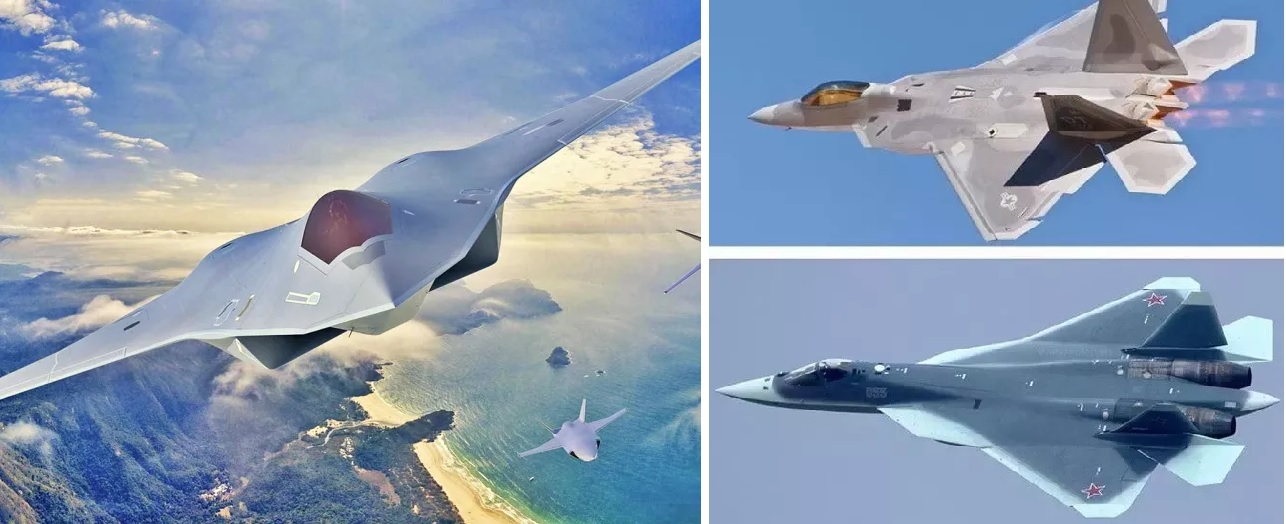 Key Differences Between 5th vs. 6th Generation Fighter Jets
Key Differences Between 5th vs. 6th Generation Fighter Jets
-
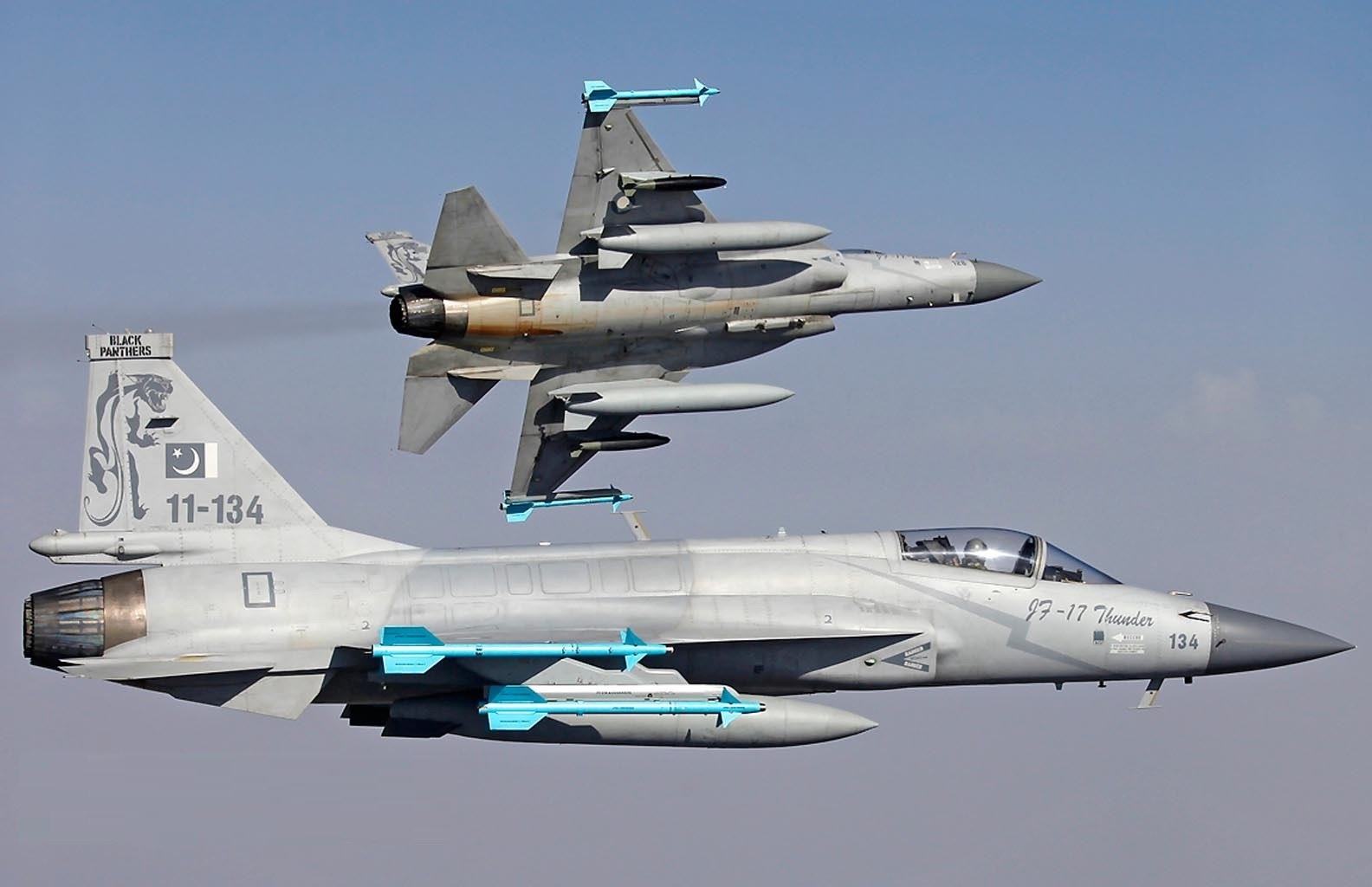 Pakistan Air Force to Unveil Stealth-Enhanced JF-17 Block 4 Fighter Jet by 2028
Pakistan Air Force to Unveil Stealth-Enhanced JF-17 Block 4 Fighter Jet by 2028
-
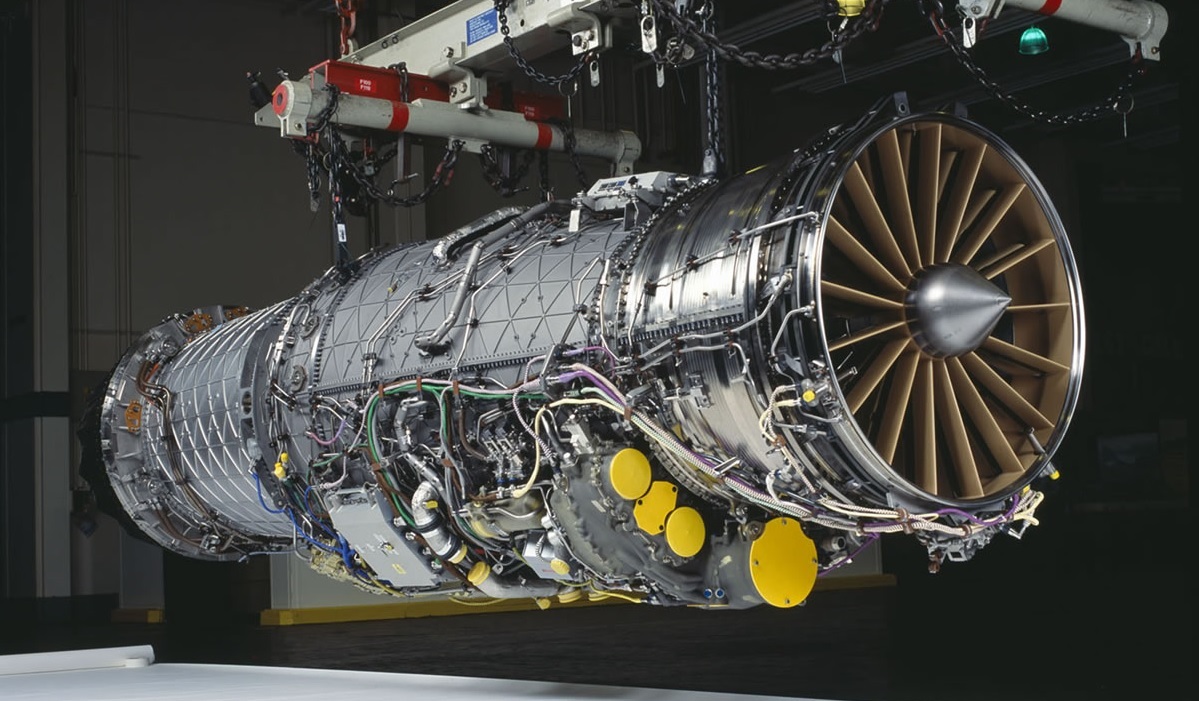 India’s AMCA Engine Decision: Safran vs. Rolls-Royce Final Expected by 2025
India’s AMCA Engine Decision: Safran vs. Rolls-Royce Final Expected by 2025
-
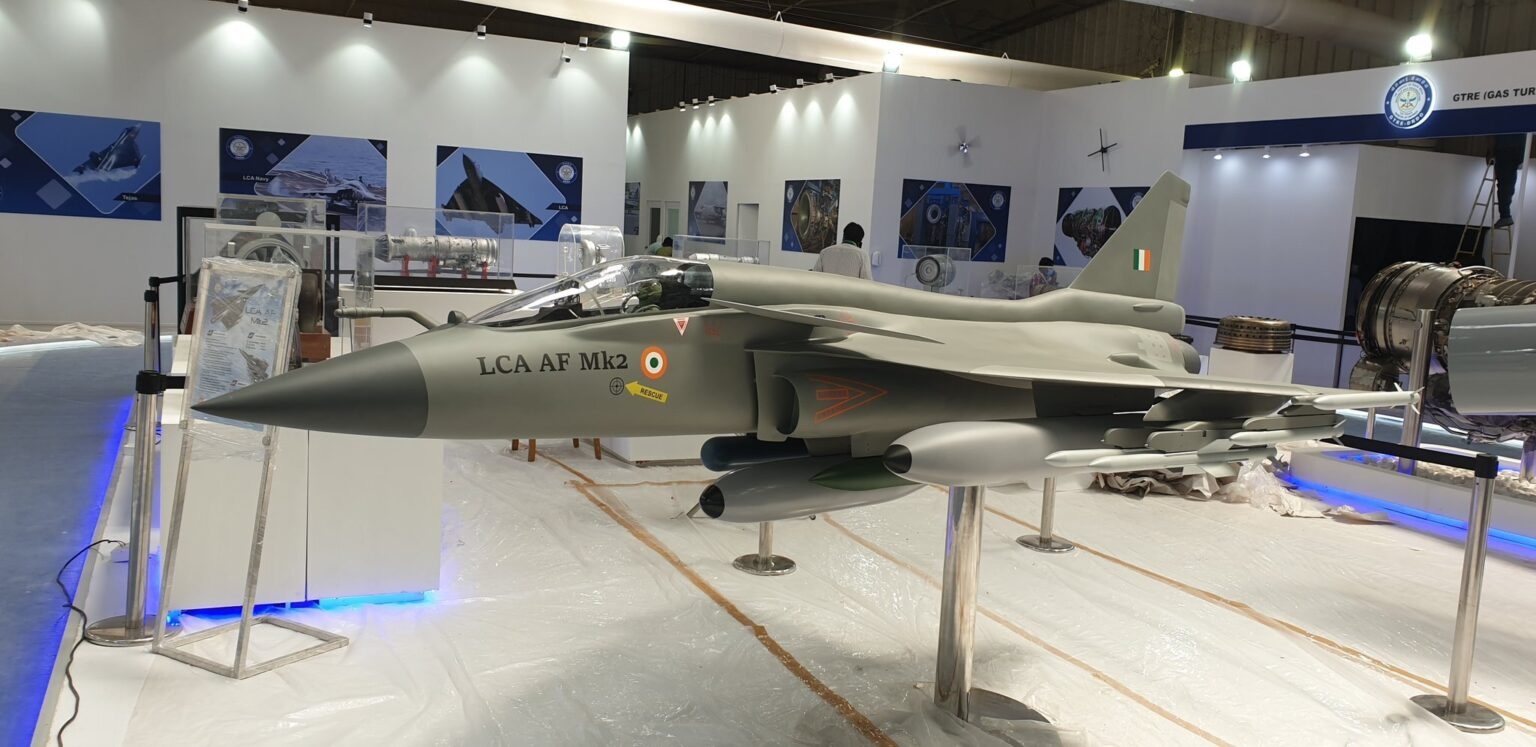 Tejas Mk2 Nears 2025 Rollout as HAL Ramps Up Final Assembly and System Integration
Tejas Mk2 Nears 2025 Rollout as HAL Ramps Up Final Assembly and System Integration
-
 Pakistan Announces 15% Increase in Defence Budget for 2024-25 Amid Economic Crisis
Pakistan Announces 15% Increase in Defence Budget for 2024-25 Amid Economic Crisis
-
 India's TEDBF Program Takes Shape First Flight by 2028: Aiming for Naval Supremacy with Advanced Stealth and Technology
India's TEDBF Program Takes Shape First Flight by 2028: Aiming for Naval Supremacy with Advanced Stealth and Technology
Top Trending in 4 Days
-
 Pakistan Army to Deploy Troops to Gaza by January 2026 Under Trump–Munir Deal, $500 Per Soldier
Pakistan Army to Deploy Troops to Gaza by January 2026 Under Trump–Munir Deal, $500 Per Soldier
-
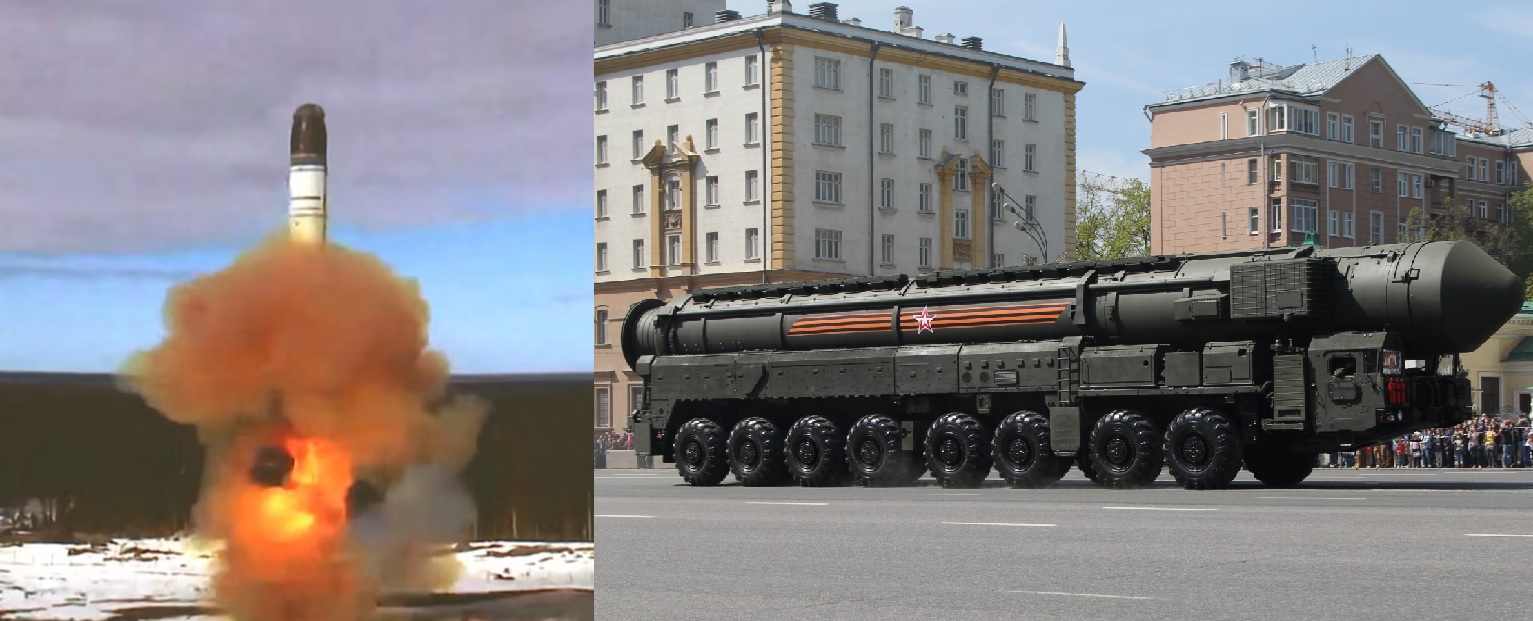 Russia Simulates Full-Scale Nuclear War in Siberia, Deploys Yars ICBMs on Combat Patrols
Russia Simulates Full-Scale Nuclear War in Siberia, Deploys Yars ICBMs on Combat Patrols
-
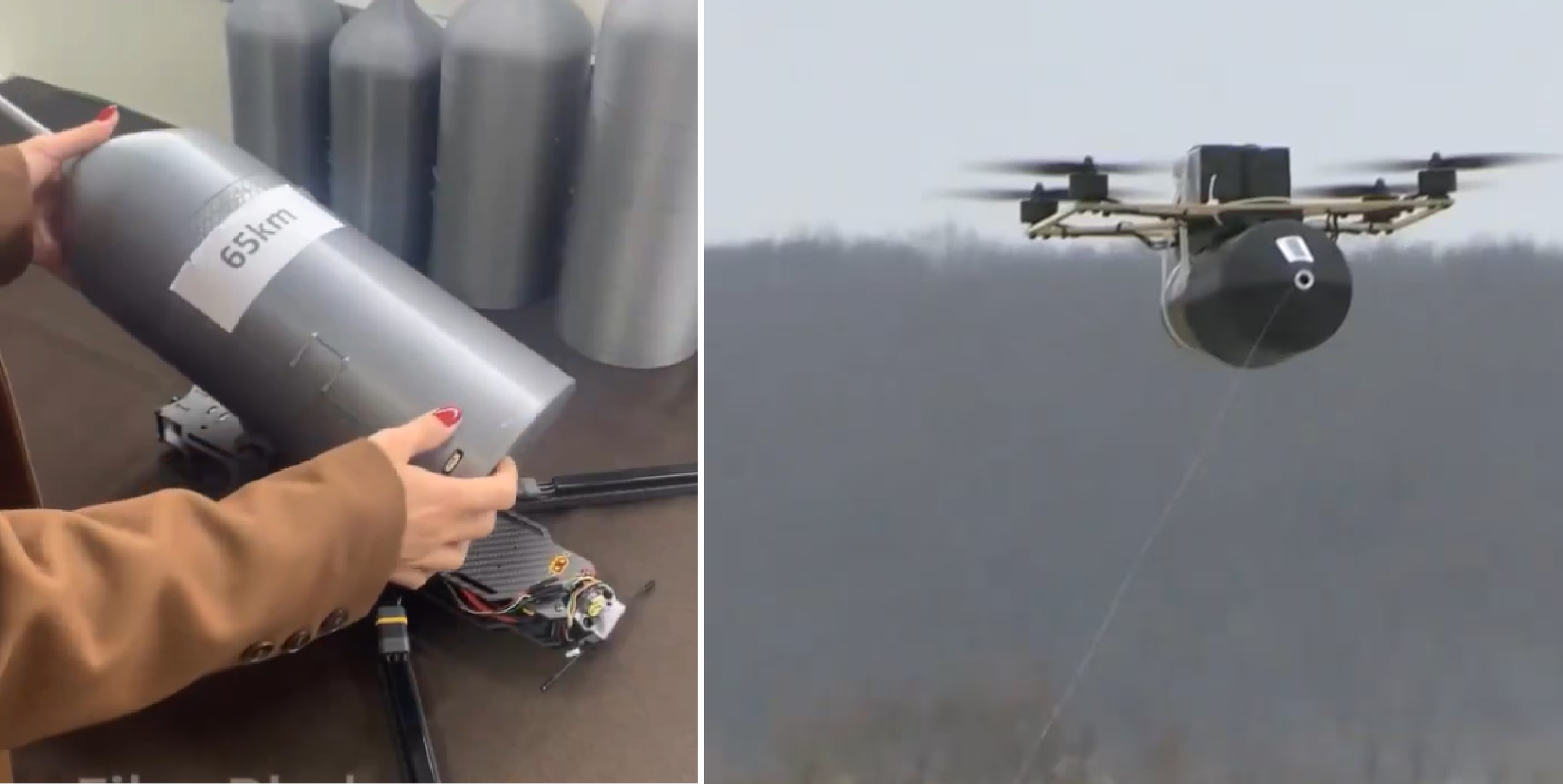 Russia Claims Test of 65-Kilometre Fiber-Optic FPV Drone Link
Russia Claims Test of 65-Kilometre Fiber-Optic FPV Drone Link
-
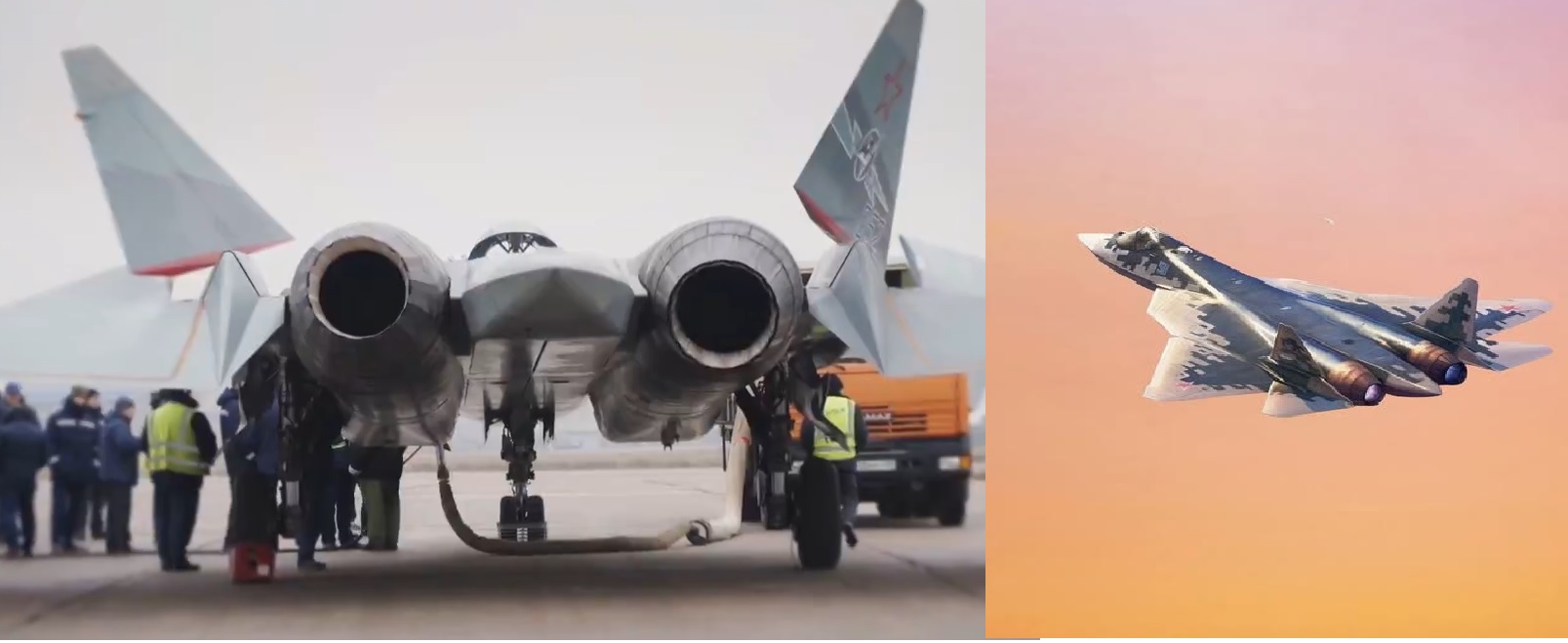 Russian Su-57 Conducts First Flight With Next-Generation Izdeliye-177 Engine
Russian Su-57 Conducts First Flight With Next-Generation Izdeliye-177 Engine
-
 Russian Strike on Mayaki Bridge Threatens Up to 60% of Ukraine’s Fuel Supply
Russian Strike on Mayaki Bridge Threatens Up to 60% of Ukraine’s Fuel Supply
-
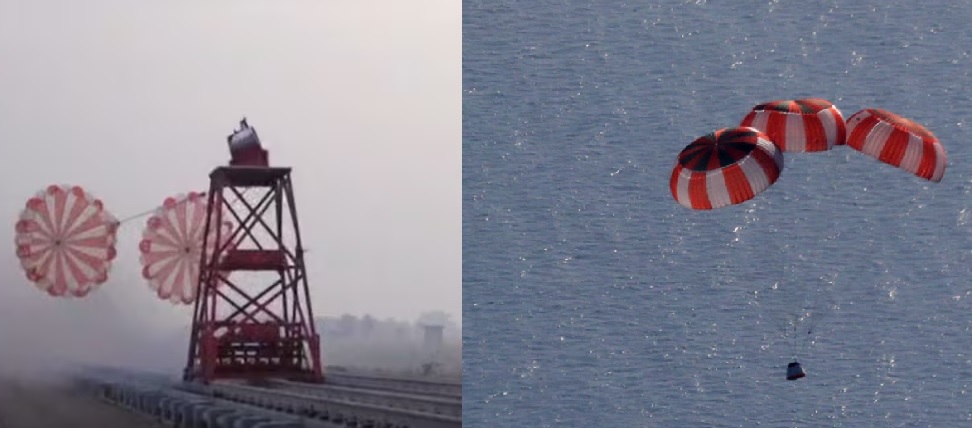 ISRO Successfully Qualifies Drogue Parachutes for Gaganyaan Crew Module
ISRO Successfully Qualifies Drogue Parachutes for Gaganyaan Crew Module
-
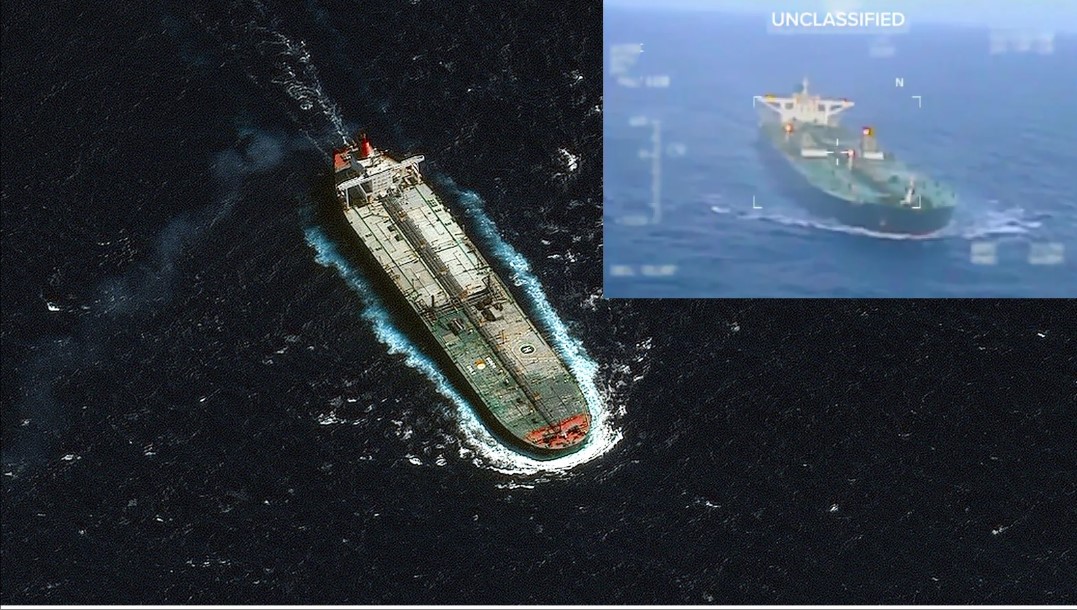 U.S. Seizes China-Linked Oil Tanker Carrying Venezuelan Crude in International Waters
U.S. Seizes China-Linked Oil Tanker Carrying Venezuelan Crude in International Waters
-
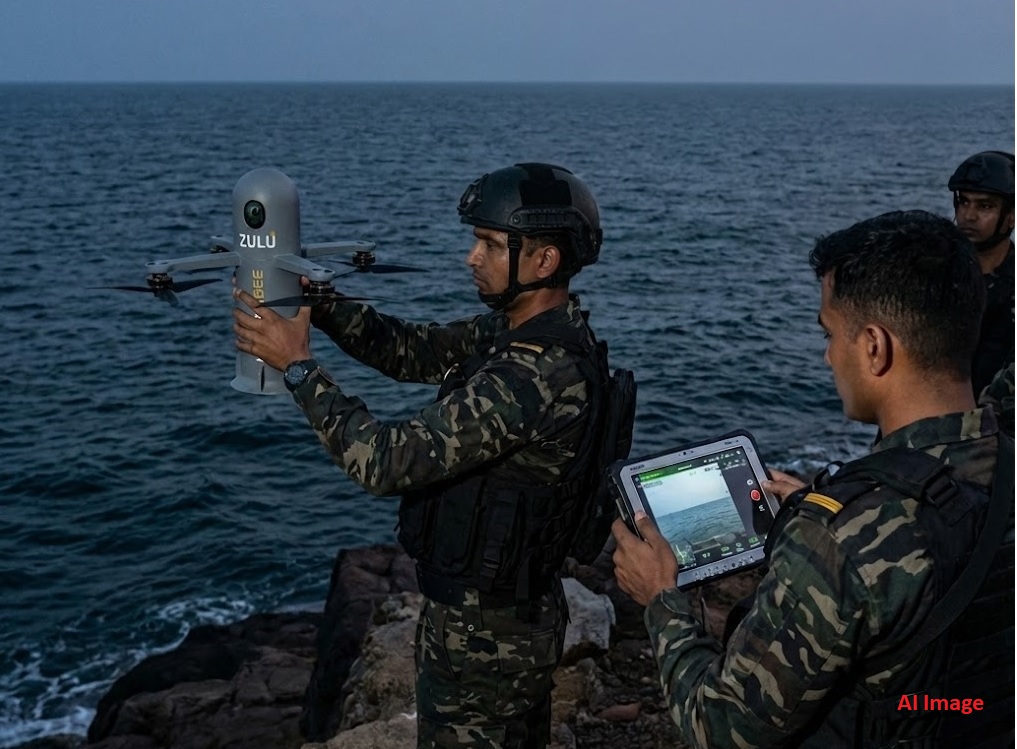 Indian Navy’s MARCOS Induct High-Tech ‘Hoverbee’ Kamikaze Drones for Stealth Operations
Indian Navy’s MARCOS Induct High-Tech ‘Hoverbee’ Kamikaze Drones for Stealth Operations

